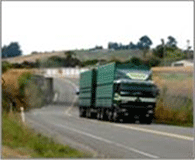SAFE RIDING
SAFE RIDING
Few can afford the luxury of a car due to the steep increase in the price of fuel and vehicle cost, but the number of motor bikes on the streets of Indian cities is increasing day by day. The motor bike rider is very much vulnerable to accidents. They are totally unprotected, as there is no protective shell on a motor bike as on four wheeled vehicles. Survey shows that the chances of fatalities are twenty times greater for two wheeler riders compared to car drivers. Motorcycling is pleasant and exhilarating experience. It is an economic means of transport as well. However the motor cycle rider is more exposed to the risks of accidents. High volume of traffic and its speed make it essential for motor cycle riders to expect the un-expected and anticipate timely the wrong doings of other road users.
|
| Select a bike which is stable, well-constructed, efficient, user friendly, fair in performance and low in price. In performance the bike should be smooth. Clutch action should be light and bike should leap ahead as you twist the throttle grip without making a knocking sound. The gear change too should give well pull, climbing ability. The overall performance and sprinting ability can be judged if subjected to riding at a speed of 0–60 Kmp/hr. and attaining the same in 10 - 12 seconds besides giving fuel average of 60 – 70 km per liter. The vehicle should give a feel of solid and offer good ride & solid grip. |
While riding one gets tempted to tackle corners at very lean angles. It can prove to be risky in case the tyres are not adequate for the job. The bikes with a solid feel having high ground clearances enables the rider to handle even bad roads easily encountered if he travels on rural roads having gravels, stones or loose soil. The riding posture should be right & comfortable. The load distribution should be center biased. It should not matter much even if one does a bit of clutch slippage with a pillion riding at back, still keeping the bike stable. The impressive ride & quality handling of bike should be such that one may find a way out through congested stretch of roads and bumper-to-bumper traffic. The vehicle should clock reasonably good speed on different road conditions - flyovers, expressways, badly lit or pot hole-infested stretches.
The biggest cause of concern is that two wheelers accidents victims succumb to head injuries. This shows real necessity & usefulness of crash helmets. |
 |
|
 |
Safety measure required:
• Compulsory fitment of rear view mirror
• Compulsory cover for rear wheel and chain so that loose garments
(especially sarees & dhotis worn by Indians) do not get entangled to spokes
|
• Restriction in carrying more than one pillion rider
• Prohibiting the rider holding learner’s license in carrying pillion rider
• Compulsory fitment of footrest for pillion rider
• The rider should stick to safe speed always & not to cross maximum limit
|
|
 |
Causes of an accident:
• Double riding
• Overloading
• Not keeping to left
• Turning without giving signal
• Toeing
• Not observing traffic rules
|
• Riding without light at nigh
• Riding in-between fast moving vehicles
• Cutting in/zigzag riding in the flow of traffic
• Confused by traffic
• Rider is inexperienced in use of control,
• Improper maintenance of roads (potholes)
• Skidding on wet/slippery roads |
 |
Common faults of a rider:
• Over speeding (Crossing mandatory limits)
• Did not give right of way to vehicle/pedestrian
• Followed too closely
• While ascending/ descending on hills
• Passing through curve
• Cutting in sharply after overtake
• Being on the wrong side of the road
• Failed to give signal
|
• Gave improper signal
• Disregarding signage/signals/road marking
• Improper moving off from parked position
• Fatigue/sleep or sickness
• Improper use of head light
• Glare
• Vehicle defects
• Defective brakes
• Defective steering
• Puncture /Tyre burst
• Bald tyres
• Serious mechanical defects
|
|
|















